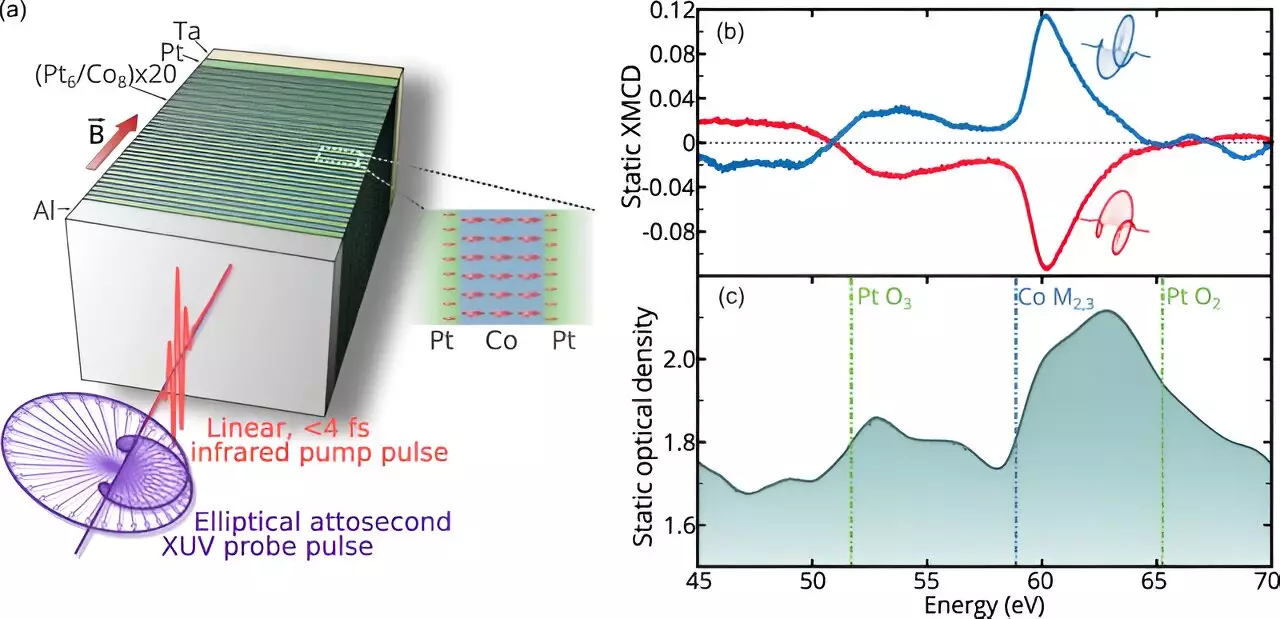In the quest for more efficient electronic devices, the concept of spin—specifically spin currents—has emerged as a promising area of research. Unlike conventional electrical currents that rely on the movement of charged particles, spin currents involve the coherent flow of electrons whose spins are aligned. These currents could revolutionize various electronics by allowing faster, more energy-efficient operations. Recent research, featured in the journal *Physical Review Letters*, has unveiled techniques for generating these spin currents using ultrashort laser pulses, marking a significant milestone in material science and applied physics.
The pioneering study conducted by an international team of physicists utilized innovative methods to create spin currents directly, rather than through indirect means typically employed in previous attempts. Traditionally, lasers were used to generate spin, but this method often resulted in a blend of electron orientations, thus hampering efficiency. The researchers overcame this issue by employing a specifically designed target block composed of 20 alternating layers of platinum and cobalt, each measuring a mere nanometer. This careful structuring of materials was pivotal for achieving the desired electron spin alignment.
To enhance the effectiveness of their approach, the team applied a magnetic field that was orthogonal to the induced layers within the block. This magnetic field served a dual purpose: not only did it facilitate the alignment of electron spins but it also allowed for the precise manipulation of the magnetic properties of the layers. This critical step highlighted the potential of layered materials in the realm of spintronics.
The Role of Laser Pulses
Once the structural and magnetic conditions were established, the researchers employed a two-step laser process. Initially, a linearly polarized laser pulse was directed at the block, followed by a circularly polarized probe laser targeting the same area. The interaction between these laser pulses induced swift shifts in electron spins across the layered structure, occurring within a remarkably brief timescale of a few femtoseconds. This rapid action outstripped previous methodologies, which often required longer durations to achieve similar outcomes.
The experimental results indicated that the manipulation of spins significantly altered the magnetic ordering in both platinum and cobalt layers. This finding aligns tightly with theoretical predictions, reinforcing the robustness of the research. The agreement between experiment and theory not only validates the approach taken by the team but also enhances our understanding of spin dynamics at the nanoscale.
The implications of this study are profound. The ability to generate spin currents directly promises not only faster processing speeds in electronic devices but also a significant reduction in energy consumption. As the world moves towards greater sustainability, these improvements in efficiency are crucial. Furthermore, the findings pave the way for future exploration of spintronic devices, which could lead to novel technologies in data storage and processing that leverage spin rather than charge.
The groundbreaking research on direct spin current generation heralds a new era in the intersection of laser physics and materials science, presenting exciting opportunities for the future of electronics. As technology evolves, the pursuit of more efficient, faster devices will undoubtedly continue, driven by innovations such as those revealed by this international team of physicists.


Leave a Reply